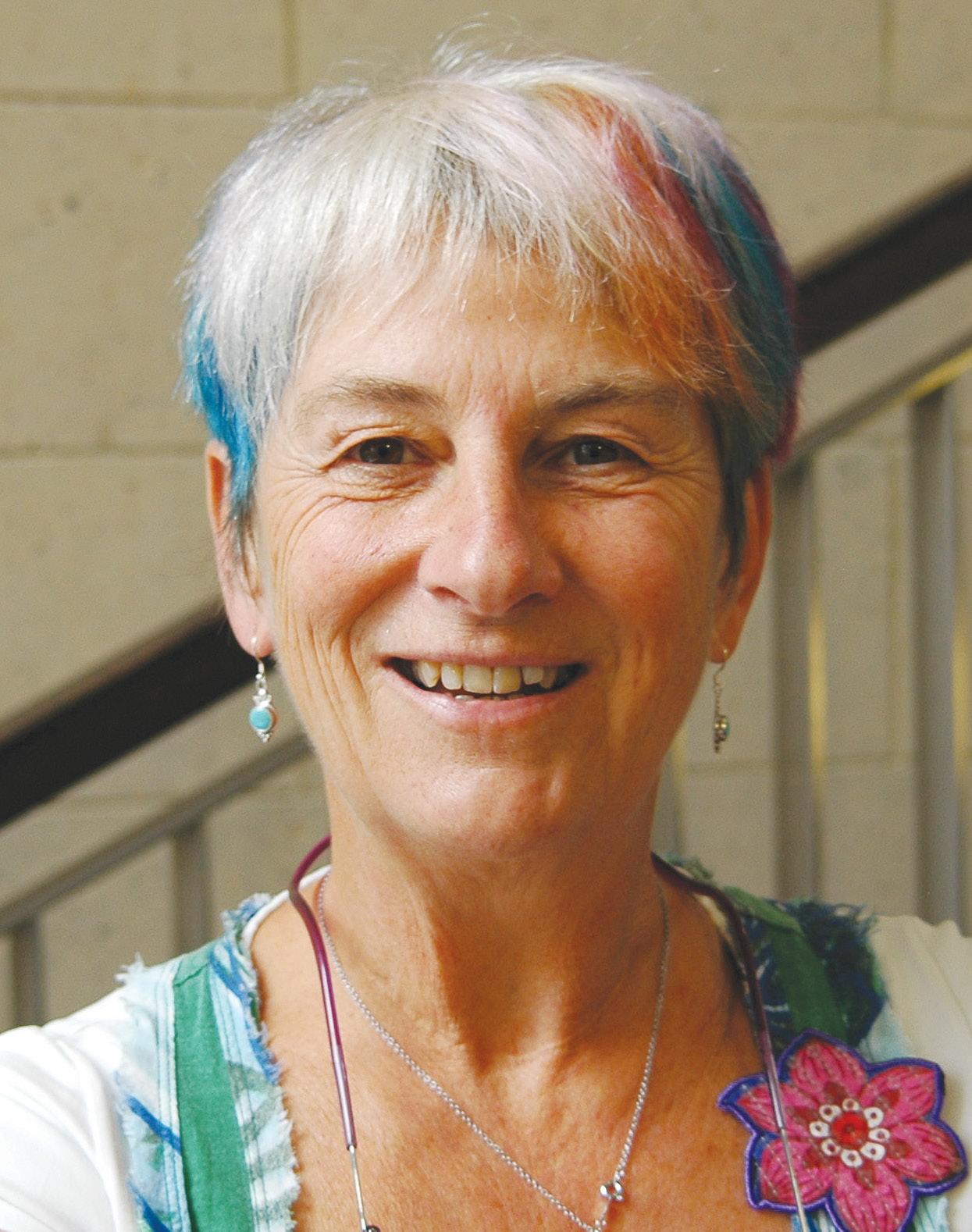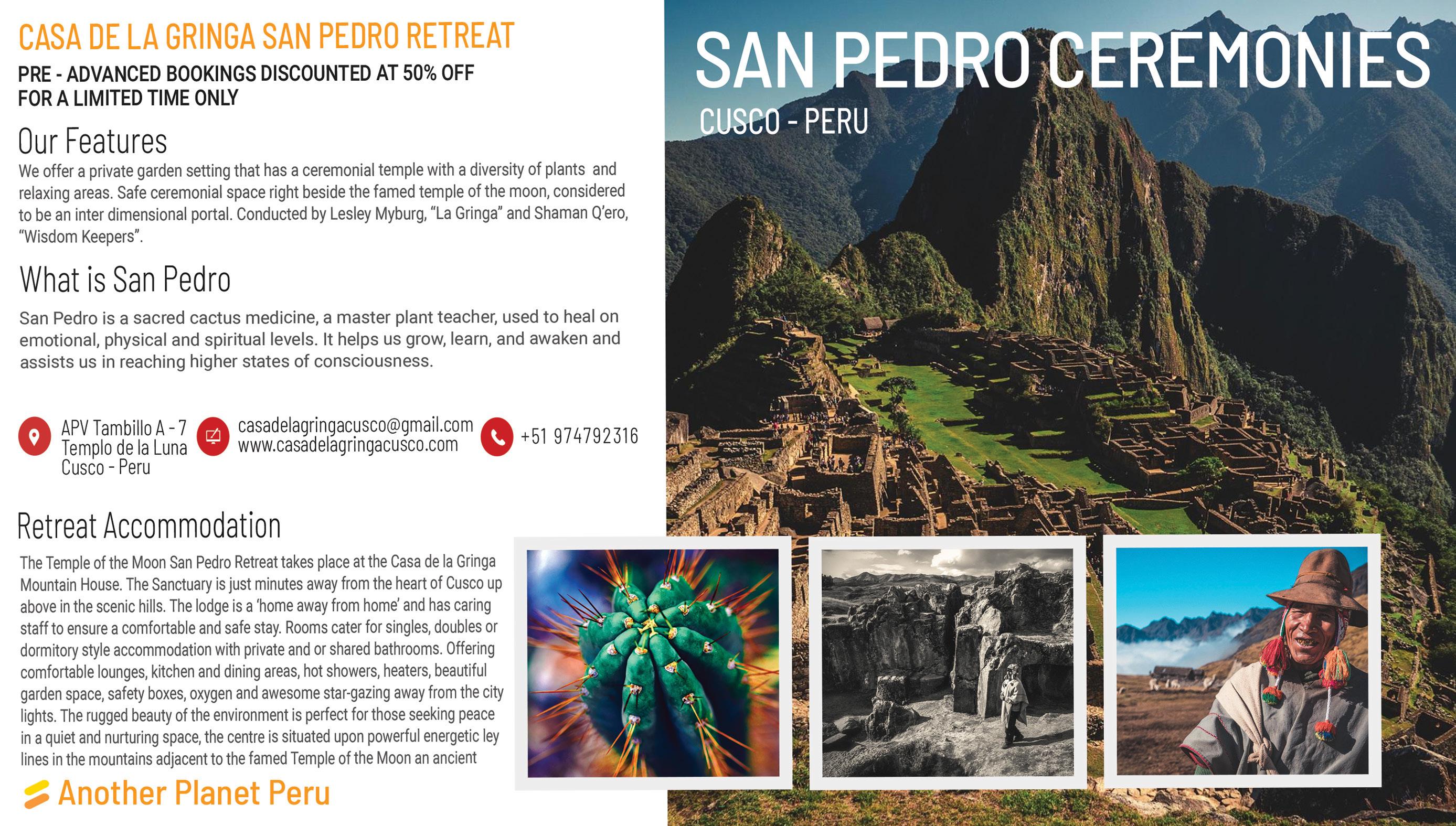
8 minute read
HIGHLY LIKELY
from Sept. 2020 - California Leaf
by Northwest Leaf / Oregon Leaf / Alaska Leaf / Maryland Leaf / California Leaf / Northeast Leaf
Highly Likely highlights Cannabis pioneers who paved the way to greater herbal acceptance.
>> 12 SUSAN BLACKMORE

Memetics refers to the SUSAN BLACKMORE IS before any sort of In the same lecture, she went on to talk about how study of information and A RENOWNED BRITISH recreational legalization societies have developed relationships to mindculture, and is based on WRITER, LECTURER, in America, Blackmore altering substances: the concept of Darwinian PROFESSOR AND admitted to a largely “In just about every human society there has ever evolution. One of the best BROADCASTER WHOSE academic audience that been, people have used dangerous drugs - but ways to simply look at what FIELD OF RESEARCH she consumes Cannabis: most have developed rituals that bring an element memetics studies is the INCLUDES MEMETICS, “Some people may of control or safety to the experience,” noted concept of the ‘meme’ in PARAPSYCHOLOGY smoke dope just to relax Blackmore. “In more primitive societies, it is shamans internet culture. One can AND CONSCIOUSNESS. or have fun, but for me and healers who control the use of dangerous drugs, study what effect memes the reason goes deeper. choose appropriate settings in which to take them created and shared (and edited) online In fact, I can honestly say that without and teach people how to appreciate the visions can have in the real world; say, on social Cannabis, most of my scientific research and insights that they can bring. In our own society, justice movements or the rise of neowould never have been done and most criminals control all drug sales. This means that fascism. of my books on psychology and evolution users have no way of knowing exactly what they are
Parapsychology is the study of processes would not have been written,” she said. buying and no one to teach them how to use these typically considered outside of scientific “Some evenings, after a long day at my dangerous tools…” knowledge of the capacity of the human desk, I’ll slip into the bath, light a candle “It’s an old metaphor, but people often liken the brain. Processes like telepathy, telekinesis and a spliff, and let the ideas flow - that task to climbing a mountain. The drugs can take and hypnosis. lecture I have to give to 500 people next you up in a helicopter to see what’s there, but you
That said, listening to a lecture from week, that article I’m writing can’t stay. In the end, you have to climb Blackmore can be a heady experience. But it’s Blackmore’s wit and colloquial style of interpretation of big subjects (like, for example – consciousness) that has made her such a popular lecturer and essayist. I recommend a seven minute YouTube video called “Consciousness – A Short Introduction” to see how easy she makes big, sweeping concepts understandable to lay people. But what might be Blackmore’s most compelling thoughts on Cannabis (and for New Scientist, those tricky last words of a book I’ve been working on for months. This is the time when the sentences seem to write themselves. Or I might sit out in my greenhouse on a summer evening among my tomatoes and peach trees, struggling with questions about free will or the nature of the universe, “I can honestly say that without Cannabis, most of my scientific research would never have been done and most of my books on psychology the mountain yourself - the hard way. Even so, the drugs may provide the inspiration to keep climbing.” This is only an introduction to you, dear reader, of one of the many subjects (61, by my count) that this column has covered over the past five years. It is my hope that this small introduction will pique your interest enough to learn a little bit more about her and about your own consciousness - and what beneficial things that Cannabis does for other mind-altering drugs) can be taken and find that a smoke gives and evolution it. If a leading scientist can be helped from her 2005 speech at the Cheltenham me new ways of thinking would not have by this remarkable plant, let’s see what Science Festival. There, a full 10 years about them.” been written.” we can do!



language barriers
Calling a particular product sativa or indica is much like describing a wine by its vine. It is interesting information if you enjoy plant morphology, but falls short when relaying the nuances of effect, aroma and taste.
Yet here we are today, drowning in the vagueness of these words. They are marketed on every item and muttered by the bulk of budtenders. From dispensaries to the mainstream media, we can’t escape these persistent plant identifiers.
The terms sativa and indica have come a long way from their original definitions: ones that focused on geographical origin and plant structure. Despite a constant flow of community conversation on the matter, they remain widely misused.
In a 1753 publication titled Species
Plantarum (one of the first works to present a system of scientific nomenclature), a
Swedish botanist named Carl Linnaeus introduced the name Cannabis sativa. At that time, Linnaeus described but one species of hemp (of the sativa variety). It wasn’t until
European naturalist Jean-Baptiste Lamarck listed another in 1785 that the world was introduced to “Cannabis indica.”

A British Medical Journal piece by editor Geoff Watts explains that Lamarck originally distinguished Cannabis sativa from the indica variety “on the basis of several characteristics including their firm stems, thin bark, and the shape of their leaves and flowers.” In a 2016 publication called Cannabis Taxonomy: The Sativa vs. Indica Debate, Robert Clarke and Dr. Mark Merlin observe that Lamarck named the second species Cannabis indica - meaning ‘Cannabis from India’ - after the first wave of this “highly psychoactive plant” reached Europe. While Linnaeus observed the hemp-like, narrow-leafed, low THC characteristics of Europe’s plants being grown for fiber, Lamarck documented India’s wide-leafed, high-potency plants grown for hashish. The high-potency plants that were observed as “indica” may have something to do with the classification’s reputation as heavy hitting and sleepy. Originally grown for their fiber production and low THC, sativas became well known as light or uplifting.
This knowledge gives us insight into the way these words are used today. But our scientific evidence has grown a great deal since the 18th century, and we now have access to a neverending network of information at our fingertips. It’s easier than ever to learn about strain lineage, cannabinoids, terpenes, and the synergy of mechanisms like the entourage effect that affect the human body far beyond what simplified categories of Cannabis can relay.
So, why do brands and budtenders alike cling to terms taken from 18th century definitions? These classifications were never put down on paper as a way to describe effects and if they were, years of evolution and breeding would have rendered them obsolete in the 2020 market.
There’s no question that regulation has played a part in the industry simplification of classifying Cannabis. Companies can’t legally make medical claims and are limited in how they describe products. The State of Oregon doesn’t require terpene testing either, so many companies don’t see the need to test every product for a complete profile. With only parts of the puzzle (like THC and CBD) required on Oregon Cannabis labels, it is admittedly difficult to assess the outcome of particular products. “There are biochemically distinct strains of Cannabis, but the sativa/indica distinction as commonly applied in the lay literature is total nonsense and an exercise in futility. One cannot in any way currently guess the biochemical content of a given Cannabis plant based on its height, branching, or leaf morphology...It is essential that future commerce allows complete and accurate cannabinoid and terpenoid profiles to be available.”
-Dr. Ethan Russo
The solution? Consumer education and conscientious company branding. Educate your staff, encourage terpene testing and take time to use alternative product descriptors. Tempted to describe a strain’s effects as sativa? Try terms like uplifting, focused or energetic. Got an inclination to say indica? Try talking about sleepiness, heaviness or relaxation. There are a plethora of descriptors that will avoid rustling regulator’s feathers over medical claims. When thorough terpene testing isn’t available, there are many ways to read about common cultivar characteristics.
Clarifying that there is no need to throw out the terms sativa and indica should soothe any sour feelings this far into the conversation - after all, they are irrefutably relevant to growers and breeders identifying the morphological characteristics of plants. But drastically limiting the use of this tacky terminology on the consumer side would serve this and future Cannabis communities well. Generalizing the massive variety of benefits is damaging to normalization efforts, the medical movement and consumerism alike. Narrowing presentation down to sativa, indica or hybrid severely limits the long list of incredibly valuable effects Cannabis can provide.
Amanda Day is a multimedia artist and journalist based in Eugene, OR who has worked for Leaf Nation since 2019.
PODCAST MAGAZINE MEDIA
California Leaf is dedicated to providing accessible, authentic, plant and people focused media to the world each and every month - with over 350 dropoff locations and more added daily, California Leaf is your one-stop shop for Cannabis brand exposure!











